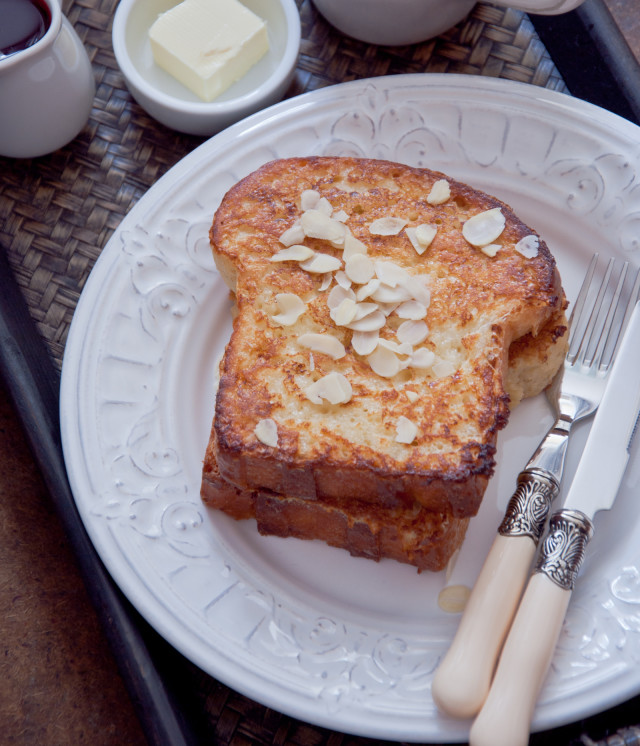4 Questions for Oregon's First Cricket Flour Entrepreneurs

Cricket flour french toast? Yeah, it's a thing.
Charles Wilson and Omar Ellis are passionate about sustainability, and they're going way beyond separating their recycling and opting for organic laundry detergent. The University of Oregon grads founded and operate cricketflours.com, a Portland-based company sourcing high-protein crickets raised in the US to create versatile flours health-conscious foodies and athletes can mix in to smoothies, chocolate chip cookies, french toast, protein bars, and other common recipes.
To learn more about the next wave of paleo-style ingredients, we got in touch with the pair to find out how they got started and what's in store for the future.
So...why crickets?
The idea first started when Charles first began researching alternative sources of protein and nutrition after extensive allergy testing left him unable to turn to what was currently available on store shelves. It wasn’t that those products were bad, but that they contained so many different ingredients, additives, and processing procedures that he was allergic to most of the contents. After looking at a variety of options and studying nutritional information, cricket flours seemed like the perfect fit. Pure cricket flour has a slight nutty taste, almost like a hazelnut or corn flour, so it was easy to add them to shakes, smoothies, and baked goods.
Who is your target consumer?
Our customers typically fall into three main groups:
- Athletes: Our cricket flour is great for people looking for a protein boost after their workout routines, Crossfit, or for long-endurance training.
- Those with dietary restrictions: Some of our customers have gluten-free diets, diabetic restrictions, and a lot of people that use our cricket flour products in nutritional eating plans such as Paleo, Whole 30, and more.
- Sustainability/environmentally focused folks: We're also drawing in people who see cricket flour as an alternative source of protein and nutrition. Crickets are more efficient at converting resources into protein, and are actually 20x more efficient than cattle at creating protein gram-per-gram. Because crickets are cold-blooded and can be raised using less land resources, they require only a fraction of the same feed and water required from other protein sources such as cattle, poultry, and fish.
Can you explain the process of making cricket flour? How are the crickets killed?
Making cricket flour is a very interesting process. We aim to reduce our own carbon footprint by using crickets that are grown here in the US. These crickets are raised in pens and enclosures for 4-7 weeks depending on the size required, and are then ready to be processed into cricket flour. Because crickets are cold blooded, they are often killed humanely by reducing the temperature of the enclosure to have the crickets enter into a natural state of stasis before the temperature is decreased further to kill them. Some cricket farms also use carbon dioxide to euthanize them humanely. Next the crickets are then sorted, cleaned, and then either baked, dehydrated, or freeze-dried to remove moisture before they are milled into a fine grain flour.
How do YOU use the cricket flour? Is there a good rule of thumb for subbing cricket flour for other gluten-free or wheat flours?
We personally love to bake. One of our favorite baking recipes is a the hazelnut liquor cake [from the company's upcoming cookbook, see more below]. Cooking and baking with cricket flour is a great way to incorporate more protein, however, like any ingredient, adding cricket flour to recipes will give it different attributes. In a broad sense, when cricket flour is used in baking, it functions similarly to coconut flour. You will want to make sure that you do not substitute 100% of cricket flour for your normal baking flour. In general, you will want to make sure that your normal baking flour mix, wheat-based or gluten-free, accounts for at least 70% of the mix when using cricket flour. Additionally, cricket flour displays characteristics similar to baking powder. For most of our recipes, we have found that reducing the baking powder by half works well.
Want to try some cricket flour at home? Check out Cricket Flour's online store, packed with 100% pure cricket flour and simple, flavorful blends like Peruvian chocolate cricket flour (made with two ingredients, cricket flour and cocoa), chocolate peanut butter cricket flour (with cricket flour, dehydrated peanut powder, and Peruvian cacao), and an all-purpose baking flour for traditional baked goods, starting at $15.
What's next: The company is working to release the world’s first cricket flour cookbook, All Cricket, No BULL. This cookbook will feature a few of the team's favorite cricket flour recipes—like bacon cheese muffins, chocolate covered tart cherry smoothies, spicy sautéed salmon with balsamic fig sauce, “Lemony Cricket” pudding cake, and cricket flour brownies. Follow along on the cricketflours.com website for more information.
